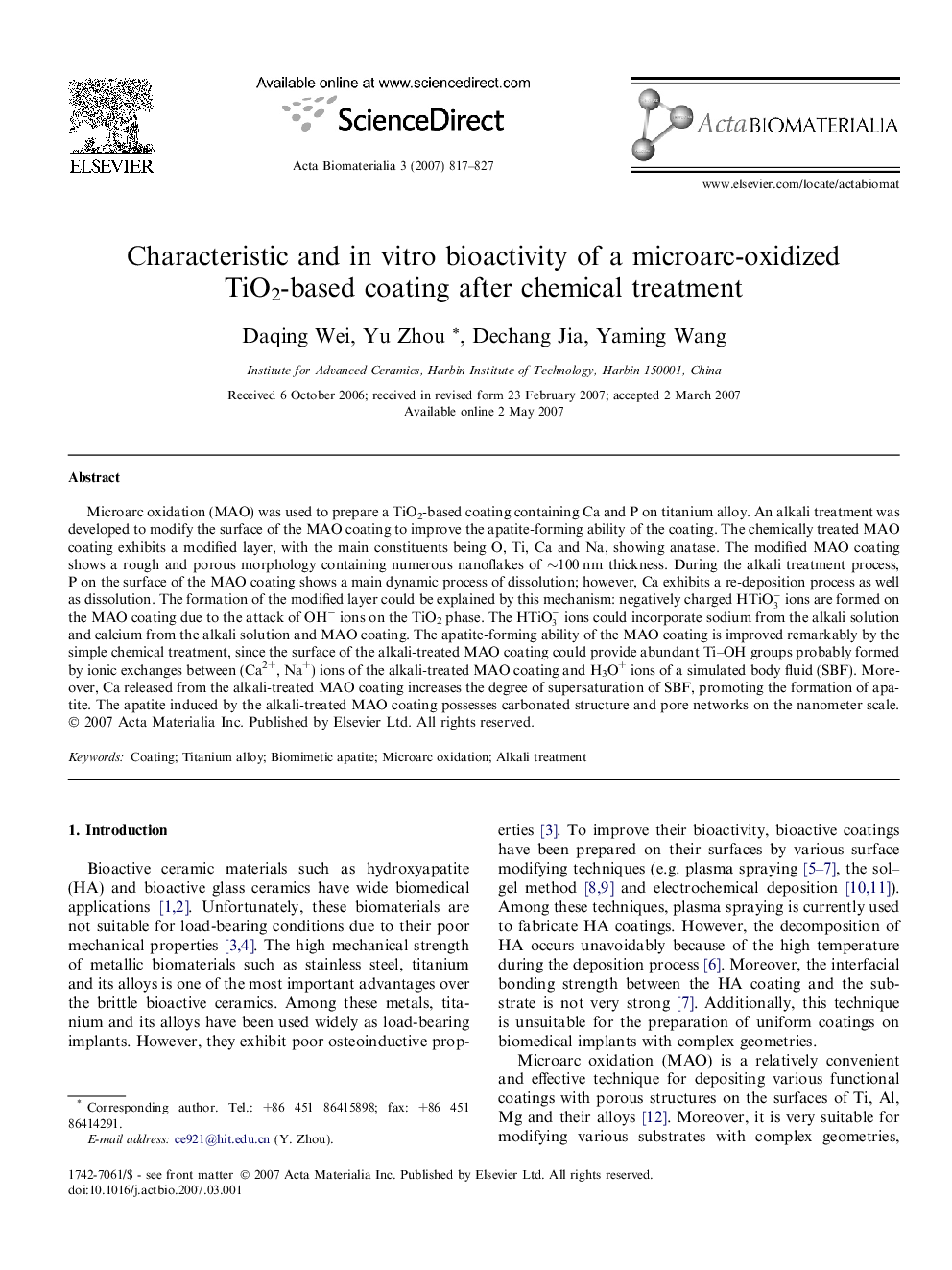| Article ID | Journal | Published Year | Pages | File Type |
|---|---|---|---|---|
| 2215 | Acta Biomaterialia | 2007 | 11 Pages |
Microarc oxidation (MAO) was used to prepare a TiO2-based coating containing Ca and P on titanium alloy. An alkali treatment was developed to modify the surface of the MAO coating to improve the apatite-forming ability of the coating. The chemically treated MAO coating exhibits a modified layer, with the main constituents being O, Ti, Ca and Na, showing anatase. The modified MAO coating shows a rough and porous morphology containing numerous nanoflakes of ∼100 nm thickness. During the alkali treatment process, P on the surface of the MAO coating shows a main dynamic process of dissolution; however, Ca exhibits a re-deposition process as well as dissolution. The formation of the modified layer could be explained by this mechanism: negatively charged HTiO3- ions are formed on the MAO coating due to the attack of OH− ions on the TiO2 phase. The HTiO3- ions could incorporate sodium from the alkali solution and calcium from the alkali solution and MAO coating. The apatite-forming ability of the MAO coating is improved remarkably by the simple chemical treatment, since the surface of the alkali-treated MAO coating could provide abundant Ti–OH groups probably formed by ionic exchanges between (Ca2+, Na+) ions of the alkali-treated MAO coating and H3O+ ions of a simulated body fluid (SBF). Moreover, Ca released from the alkali-treated MAO coating increases the degree of supersaturation of SBF, promoting the formation of apatite. The apatite induced by the alkali-treated MAO coating possesses carbonated structure and pore networks on the nanometer scale.
